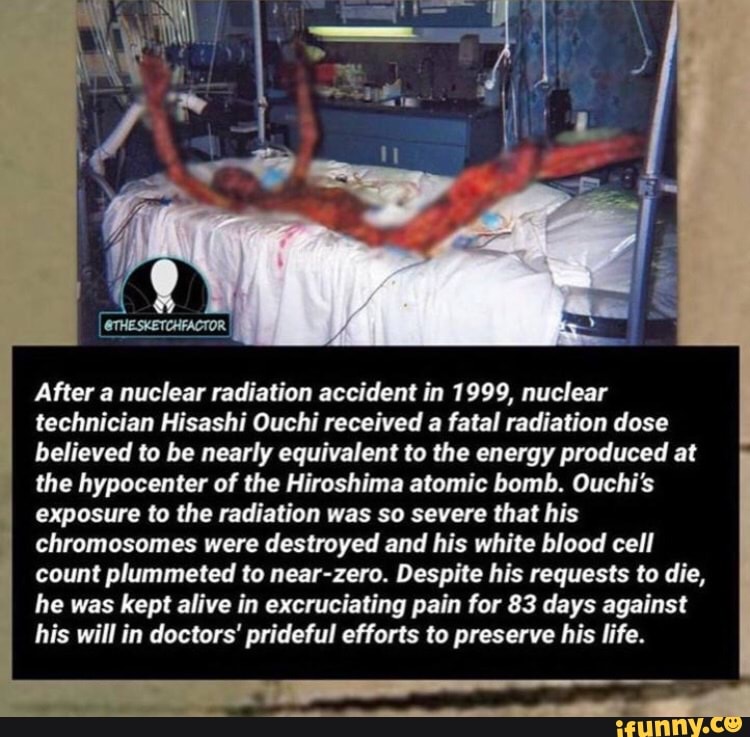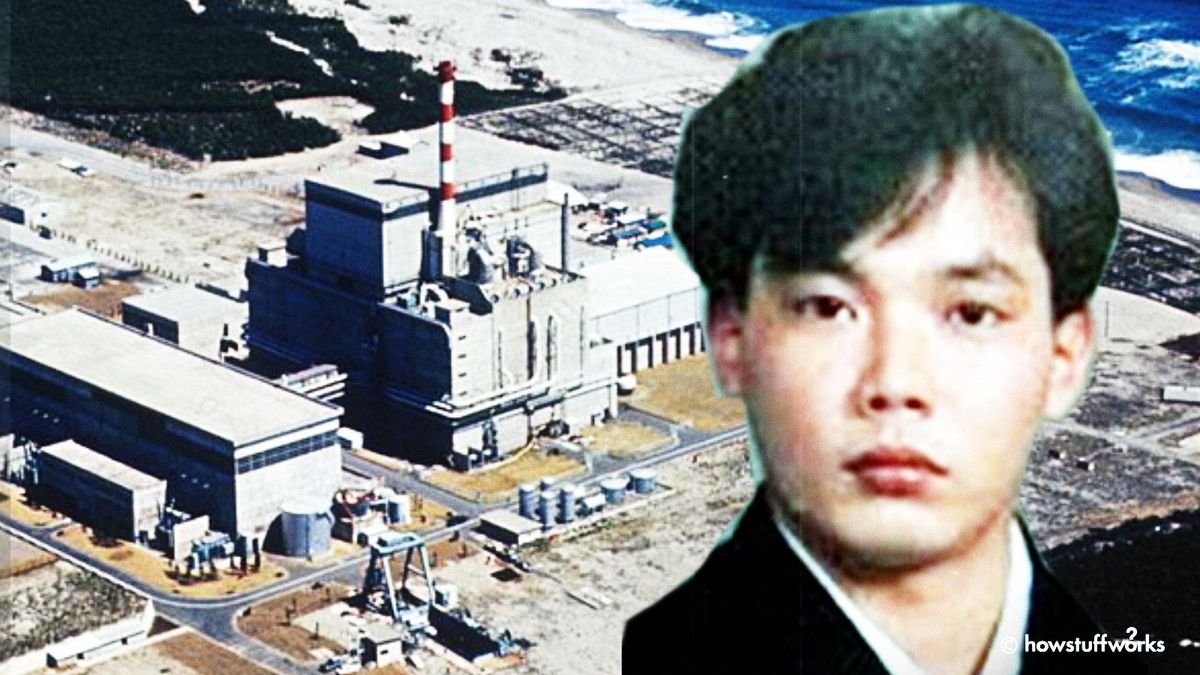Hisashi Ouchi: Unveiling The Tragedy Of Tokaimura Nuclear Accident
Have we truly learned from the past, or are we doomed to repeat the same catastrophic mistakes? The Tokaimura nuclear accident serves as a chilling testament to the devastating consequences of negligence and the critical importance of unwavering adherence to safety protocols in the nuclear industry. In September of 1999, the small town of Tokaimura, Japan, became the site of a nuclear criticality accident that sent shockwaves across the globe, forever altering the landscape of nuclear safety regulations and awareness. At the heart of this tragedy lies the story of Hisashi Ouchi, a technician who endured an agonizing 83-day battle against the effects of acute radiation syndrome, his suffering etching an indelible mark on the collective conscience of the nuclear community and beyond.
The incident at the JCO uranium processing facility was not a random act of fate, but rather the culmination of a series of human errors, procedural violations, and a pervasive lack of oversight. What began as a routine operation to convert uranium into fuel for a research reactor quickly spiraled out of control when workers, in a rush to meet deadlines, bypassed established safety protocols and resorted to unauthorized shortcuts. The consequences were swift and merciless: an uncontrolled nuclear chain reaction, a surge of lethal radiation, and a desperate fight for survival that would test the limits of medical science and human endurance. The response from both the facility and governmental bodies revealed significant shortcomings in emergency preparedness and safety protocols. This event quickly turned into a case study for nuclear safety, risk management, and the dire need for heightened protection in high-risk environments, forever underscoring the human cost of industrial failures.
| Detail | Information |
|---|---|
| Name | Hisashi Ouchi |
| Birth Date | March 1968 |
| Occupation | Nuclear Worker |
| Incident Date | September 30, 1999 |
| Death Date | December 21, 1999 |
| Location | Tokaimura, Japan |
| Cause of Death | Multiple organ failure due to severe radiation exposure |
| Facility | JCO (Japan Nuclear Fuel Conversion Co.) uranium processing facility |
| Radiation Exposure Level (estimated) | 8 Sieverts (8,000 mSv) |
| Family | Survived by his wife and child |
| Legacy | Symbol of the human cost of nuclear accidents; catalyst for stricter safety regulations in Japan |
| Further Information | World Nuclear Association - Tokai Mura Criticality Accident |
The disaster at Tokaimura unfolded due to a confluence of errors that, in retrospect, appear tragically avoidable. The workers at the JCO facility, tasked with preparing uranium for a research reactor, deviated from established procedures under pressure to expedite the process. This deviation involved mixing uranium solutions in ordinary buckets instead of using specialized, geometrically safe equipment designed to prevent criticality. This shortcut was compounded by a lack of adequate training and a deficient understanding of the inherent risks associated with handling nuclear materials. The consequence of these combined failures was the attainment of critical mass, initiating an uncontrolled nuclear chain reaction that released a massive burst of radiation.
- Lil Jeff The Untold Story Of Rising Star Rapper 2024 Update
- Who Is Travis Kelces Wife All About Kayla Nicole
Specifically, the workers, including Hisashi Ouchi, were attempting to dissolve enriched uranium in nitric acid. They poured an excessive amount of uranium solution into a settling tank, exceeding the safe limit by a significant margin. This act alone triggered the criticality event, resulting in a blue flash of light and an immediate alarm, signaling the catastrophic chain reaction. The human element was a decisive factor; the errors were not due to equipment malfunction but rather to a series of conscious decisions to disregard safety protocols. Moreover, the emergency response at the facility was woefully inadequate, exacerbating the immediate danger and hindering the ability to mitigate the consequences effectively. The lack of proper containment structures and the absence of well-defined evacuation procedures amplified the chaos and prolonged the exposure of workers and nearby residents to harmful radiation levels. In essence, the Tokaimura nuclear accident serves as a stark reminder of the vital role that rigorous adherence to safety protocols, comprehensive training, and robust emergency response systems play in preventing nuclear disasters.
The immediate aftermath of the Tokaimura accident was characterized by chaos and a desperate race against time to contain the radiation leak and provide medical assistance to those affected. Hisashi Ouchi, along with two other workers, became the immediate victims of the criticality event, absorbing massive doses of radiation that would irrevocably alter their lives. Ouchi, in particular, received an estimated 8 Sieverts (8000 mSv) of radiation, a dose far exceeding the lethal threshold and causing immediate and devastating damage to his cells and organs. In the hours and days following the accident, the focus shifted to evacuating residents within a defined radius of the facility, a process that revealed significant inadequacies in the local emergency response infrastructure. Thousands of people were temporarily displaced from their homes as authorities scrambled to assess the extent of the contamination and implement measures to prevent further exposure. The incident also triggered widespread anxiety and fear throughout Japan, leading to increased scrutiny of the country's nuclear industry and heightened concerns about the safety of nuclear facilities. Environmental contamination became a significant concern, with soil and water samples collected and analyzed to determine the extent of the radioactive fallout. The long-term health consequences for the affected workers, evacuees, and the broader community remained uncertain, underscoring the need for ongoing monitoring and medical support. The accident also prompted a comprehensive review of Japan's nuclear safety regulations, leading to stricter enforcement and a greater emphasis on emergency preparedness.
Hisashi Ouchi's 83-day ordeal in the aftermath of the Tokaimura accident has become a harrowing testament to the devastating effects of acute radiation exposure and the limitations of medical science in the face of such catastrophic damage. After absorbing a lethal dose of radiation, Ouchi was immediately transferred to a hospital in Tokyo, where a team of doctors and specialists embarked on a desperate attempt to save his life. His condition rapidly deteriorated as the radiation ravaged his cells, causing widespread internal damage and the breakdown of his immune system. Ouchi suffered severe burns, nausea, and fatigue, and his white blood cell count plummeted to near zero, leaving him vulnerable to infections. Over the course of his agonizing treatment, he underwent multiple blood transfusions, skin grafts, and experimental therapies, but none could reverse the relentless progression of his condition. His chromosomes were so severely damaged that his body was unable to generate new cells, leading to the gradual disintegration of his organs. Ouchi endured excruciating pain and suffered multiple organ failures, including kidney, liver, and respiratory failure. Despite the unwavering efforts of his medical team and the support of his family, his condition continued to worsen, and he ultimately succumbed to multiple organ failure on December 21, 1999, 83 days after the accident. His case remains one of the most extreme examples of radiation sickness ever recorded, underscoring the urgent need for improved safety protocols and medical countermeasures in the nuclear industry.
- Breaking John David Washington Wife Is He Married 2024 Update
- What Happened The Truth About Sabrina Banks Leaked Scandal
Hisashi Ouchi's experience offers invaluable, albeit tragic, lessons about the paramount importance of rigorous safety protocols, comprehensive training, and robust regulatory oversight in the nuclear industry. The Tokaimura accident starkly illustrated the devastating consequences of human error and the potential for even seemingly minor deviations from established procedures to trigger catastrophic events. It underscored the necessity of cultivating a culture of safety within nuclear facilities, where workers are empowered to speak up about potential hazards and are adequately trained to identify and mitigate risks. Furthermore, Ouchi's suffering highlighted the critical need for ongoing research into the medical treatment of acute radiation syndrome and the development of effective countermeasures to mitigate the effects of radiation exposure. The accident also prompted a broader discussion about the ethical responsibilities of employers to protect their workers and the importance of transparency and accountability in the nuclear industry. The lessons learned from Ouchi's experience have played a significant role in shaping nuclear safety regulations and practices around the world, serving as a constant reminder of the human cost of negligence and the imperative of prioritizing safety above all else.
The Tokaimura nuclear accident triggered a significant overhaul of Japan's nuclear policy and safety regulations, prompting a series of reforms aimed at preventing similar incidents from occurring in the future. One of the key outcomes was a reassessment of safety protocols at all nuclear facilities across the country, with a renewed focus on human factors, training, and emergency preparedness. The government introduced stricter regulations governing the handling of nuclear materials, including enhanced monitoring and inspection procedures, as well as mandatory safety drills for workers. There was also a greater emphasis on transparency and communication between the government, nuclear operators, and the public, with increased efforts to disseminate information about nuclear safety and emergency response procedures. In the wake of the accident, Japan invested heavily in upgrading its emergency response infrastructure, including the establishment of specialized medical facilities and the development of detailed evacuation plans for communities living near nuclear facilities. The government also strengthened its regulatory oversight of the nuclear industry, increasing the powers of the Nuclear Safety Commission and establishing independent review boards to assess the safety of nuclear facilities. These reforms were intended to restore public confidence in the safety of nuclear energy and to ensure that Japan's nuclear industry operates to the highest international standards.
The legacy of Hisashi Ouchi and the Tokaimura nuclear accident continues to resonate deeply within the nuclear industry and the broader public consciousness, serving as a constant reminder of the potential risks associated with nuclear technology and the importance of unwavering vigilance in maintaining safety standards. Ouchi's story has become a cautionary tale, underscoring the human cost of negligence and the ethical responsibility of employers to protect their workers. The accident has also had a lasting impact on public attitudes towards nuclear energy, contributing to increased skepticism and demands for greater transparency and accountability. As the world grapples with the challenges of climate change and the need for clean energy sources, the Tokaimura accident serves as a critical reminder that nuclear energy must be pursued with the utmost caution and a commitment to prioritizing safety above all else. The ongoing dialogue about nuclear energy and safety will forever be shaped by the memory of Hisashi Ouchi and the lessons learned from the Tokaimura tragedy, ensuring that the sacrifices of those affected are honored and that the pursuit of nuclear technology is guided by a deep respect for human life and the environment. The events of those 83 days, etched in the annals of nuclear history, continue to fuel the quest for safer, more responsible practices in the global nuclear community, a legacy born from profound loss and enduring resolve.
- Alexis Dziena Discover Facts About The Talented Actress
- Dez Bryant Wife The Truth Revealed Is He Married Now

10 Heartbreaking Details Surrounding Hisashi Ouchi, Who Suffered

After a nuclear radiation accident in 1999, nuclear technician Hisashi

Hisashi Ouchi Suffered an 83day Death By Radiation Poisoning Flipboard